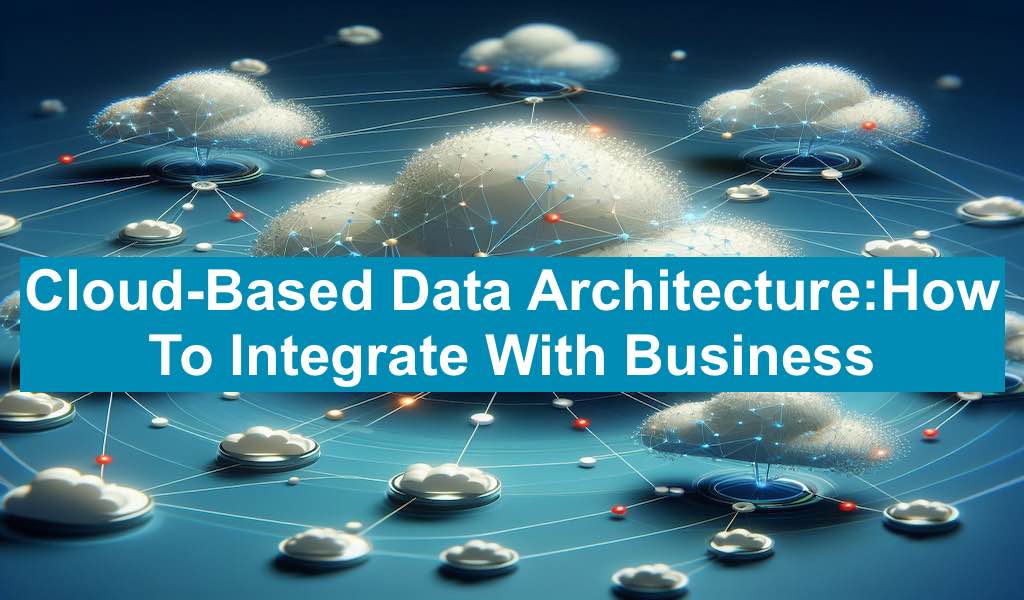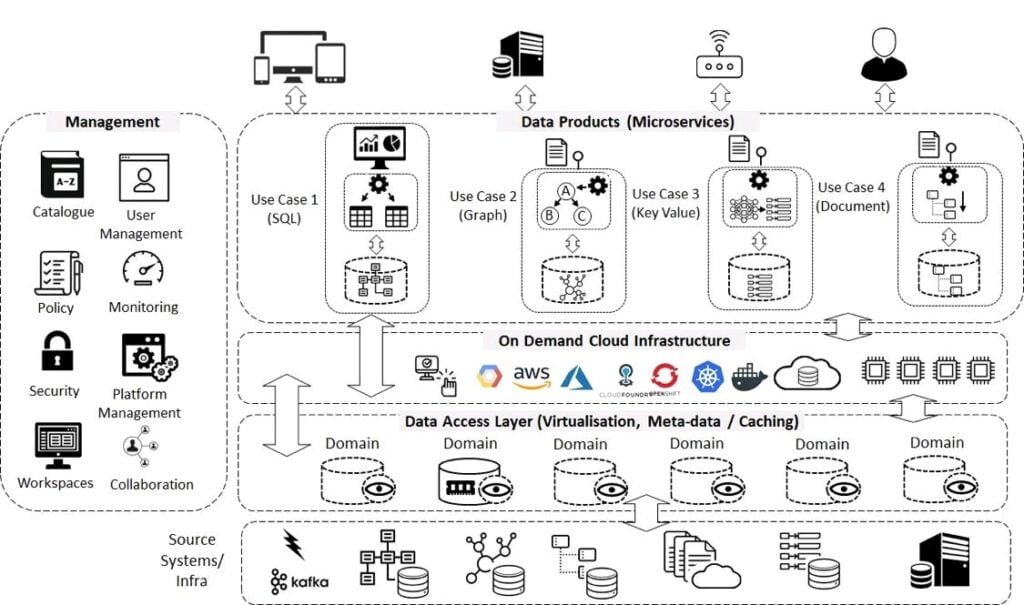
Cloud-based data architecture refers to the planning and execution of data systems that utilize cloud computing services and resources. In simpler terms, it involves designing and implementing data solutions that take advantage of the capabilities provided by cloud platforms. These capabilities include servers, storage, databases, networking, software, analytics, and intelligent services, all delivered via the internet.
Table of Content
Introduction
The models, policies, and guidelines that specify how data is gathered, stored, used, and managed in the cloud inside a company or organization are contained in cloud data architectures. Cloud data architectures control data flow, processing, and distribution among users and other apps for reporting, analytics, and other purposes.
Every year, businesses and organizations gather an increasing amount of data from IoT and new digital streams. In this context, more traditional data platforms—which are finding it difficult to manage the rapidly increasing volumes of data and the increasingly demanding applications from end users, such machine learning and artificial intelligence—are being replaced by data platforms based on cloud data architectures.
Cloud-Based Data Architecture: Understanding
Cloud architecture is a fundamental aspect of building and deploying applications in the cloud. It encompasses the layout and integration of various components and technologies necessary for cloud computing. When it comes to data, organizations increasingly rely on cloud-based data architecture due to its scalability, flexibility, and cost-effectiveness.
Key Components
- Frontend Platform:
- The frontend platform includes user interfaces, client-side applications, and the devices or networks that allow users to interact with cloud services. For instance, opening a web browser on your mobile phone to edit a Google Doc involves frontend cloud architecture components.
- Backend Platform:
- The backend components constitute the cloud itself. These include:
- Application: The backend software or application that fulfills client requests and requirements.
- Service: The heart of cloud architecture, managing resources like storage, application development environments, and web applications.
- Runtime Cloud: Provides the environment where services run, akin to an operating system handling service tasks and management.
- The backend components constitute the cloud itself. These include:
- Cloud-Based Delivery Model:
- Cloud architecture leverages the internet, intranet, or intercloud for seamless data delivery and communication.
- Network:
- The network layer connects all components, enabling resource pooling, sharing, and scalability over a network.
Benefits
- Scalability: Cloud resources can be dynamically scaled up or down based on demand, ensuring efficient data handling.
- Flexibility: Organizations can choose from a variety of cloud services and tailor their architecture to specific needs.
- Cost-Effectiveness: Pay-as-you-go models reduce upfront infrastructure costs.
- Agility: Rapid deployment and adaptability to changing business requirements.
Keep in mind that just like a well-constructed building blueprint, a thoughtfully designed cloud architecture lays the foundation for efficient and robust data management in the cloud.
Below diagram depicting a typical cloud based solution for an organization

Cloud-based data architecture: Examples
- Data Warehouses:
- Data warehouses are central repositories that store large volumes of structured and semi-structured data. They provide analytical capabilities for business intelligence, reporting, and data visualization. Examples include Amazon Redshift, Google BigQuery, and Snowflake.
- Data Lakes:
- Data lakes stores large volumes of unstructured, semi-structured, and structured raw data. They enable businesses to carry out data research, machine learning, and sophisticated analytics. Google Cloud Storage, Amazon S3, and Azure Data Lake Storage are a few well-liked data lake options.
- Serverless Architectures:
- Serverless architectures enable developers to build applications without managing servers. Services like AWS Lambda, Azure Functions, and Google Cloud Functions allow you to execute code in response to events, such as data changes or HTTP requests.
- Microservices Architecture:
- Microservices architecture divides larger applications into smaller, self-contained services. It is possible to grow, deploy, and manage each service independently. For microservice orchestration, cloud providers provide solutions like Kubernetes, Amazon ECS, and Azure Service Fabric.
- Real-Time Data Streaming:
- Streaming architectures process and analyze data in real time. Examples include Apache Kafka, Amazon Kinesis, and Google Cloud Pub/Sub. These services handle high-throughput data streams, making them suitable for applications like real-time analytics and monitoring.
- Hybrid Cloud Architecture:
- Organizations often adopt a hybrid approach, combining on-premises infrastructure with cloud services. Hybrid cloud solutions allow seamless data movement between private data centers and public clouds. Tools like Azure Arc and Google Anthos facilitate hybrid deployments.
- Data Pipelines:
- Data pipelines automate the movement, transformation, and processing of data from source to destination. Services like Apache NiFi, AWS Glue, and Google Dataflow enable efficient data flow across various systems.
- Multi-Cloud Architecture:
- Some organizations distribute workloads across multiple cloud providers to avoid vendor lock-in and enhance redundancy. Managing data across different clouds requires robust architecture and tools like Terraform, Kubernetes, and Istio.
Summary
In summary, cloud-based data architecture empowers organizations to harness the full potential of cloud computing for data storage, processing, and analytics. Whether you’re migrating existing applications or building new ones, understanding and designing effective cloud architecture is essential for success.
But always keep in your mind that each organization’s data architecture needs are unique, and the choice of architecture depends on factors like scalability, security, cost, and specific use cases. The architecture of cloud-based data is still developing, which presents fascinating opportunities for data-driven innovation.
Learn more about Cloud Architecture and other topics
- Cloud Architecture by Google
- AWS Redshift Vs Snowflake: How To Choose?
- Cloud Data Architecture by Snowflake
- NoSQL Vs SQL Databases: An Ultimate Guide To Choose
- Cloud Load Balancing: How To Choose?
- Machine Learning Algorithms: How To Evaluate The Pros & Cons
